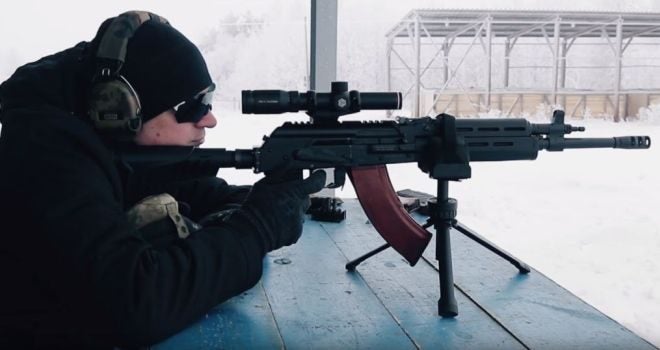Last year we reported about the Molot’s plans of making a multi-caliber AK with a quick change barrel feature. Our article was based on the sneak peek images published by the Kalashnikov Gun Magazine. Recently Molot has released a video review of this rifle revealing more features and explaining some of the earlier teased ones.
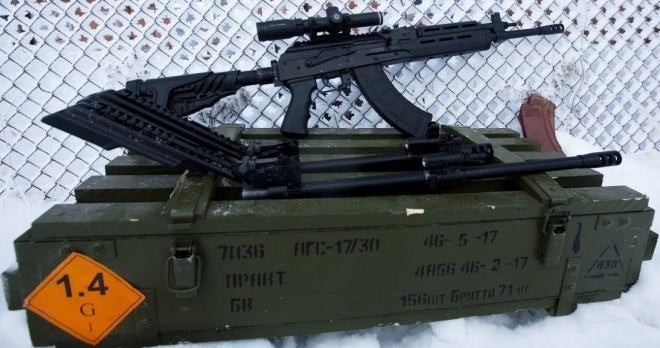
The new rifle is designated as VPO-302 (ВПО-302). As in the case of other Vepr rifles, it is based on an RPK receiver which has a beefier front trunnion and a bulged receiver to house it. The rifle comes with three barrels chambered in 7.62x39mm, 6.5mm Grendel, and .366 TKM. Each caliber option has different barrel lengths – 350mm (14″), 420mm (14.5″) and 520mm (20.5″) respectively. The barrels are made by cold hammer forging and feature chrome lined chambers. The gas blocks are also chrome lined. The twist rates of the barrels are 1:9.45″ for the 7.62x39mm barrel, 1:8″ for the 6.5mm Grendel and the .366 TKM barrel has a 1:19.7″ twist rate. The latter has only the front 5.5 inches of the barrel rifled with the rest of it being smoothbore. To learn more about the .366 TKM cartridge, you can read some of the earlier TFB articles by clicking here and here.

Note the longer .366 TKM barrel
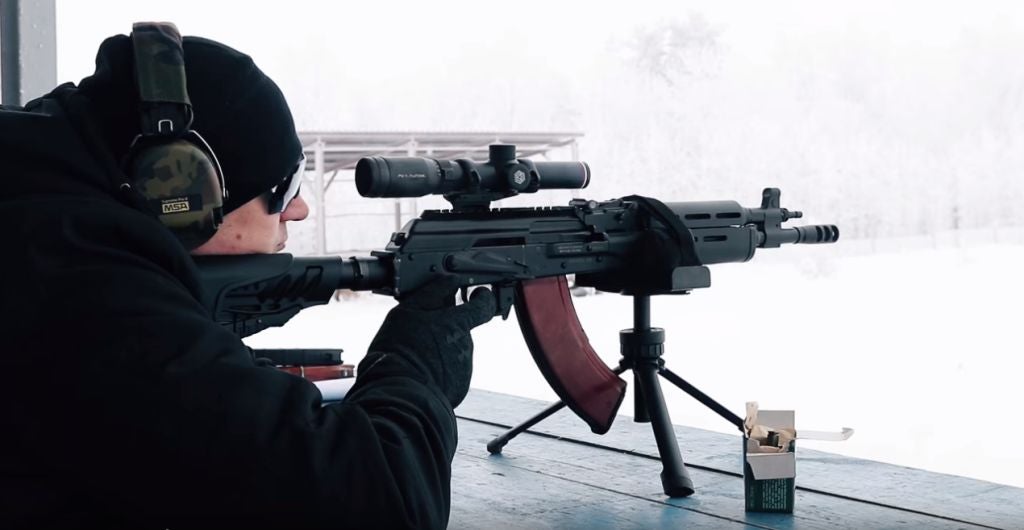
This one has the shortest 7.62x39mm barrel. The 6.5mm Grendel barrelled version is shown in the top image of this article
All these cartridges have the same case head diameter and it requires only a barrel change to convert between these three calibers. The dimensions of the cartridges also allow using standard AKM magazines. The thick .366 cartridge does have some issues fitting the standard AK magazines to their full capacity and it may also be troublesome to load 30 rounds of 6.5mm Grendel into 7.62x39mm magazines because of the less tapered case of the 6.5mm Grendel. However, magazine capacity for civilian use in Russia is limited to 10 rounds anyways and loading ten rounds of .366 TKM or 6.5mm Grendel into 7.62×39 AK magazines is normally not a problem.
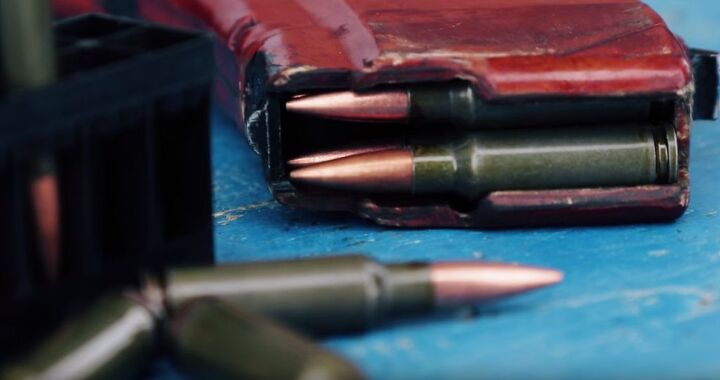
6.5mm Grendel rounds in a standard AKM magazine
The barrels are attached to the receiver via a barrel nut. In order to change the barrel, the user must field strip the rifle including the removal of the gas tube and handguard. At this point, you can access the barrel nut and unscrew it with the provided wrench. The headspace is still controlled in the front trunnion (there are no barrel extensions). The company warns that if the barrel is not properly tightened against the front trunnion, it can cause excessive headspace issue with possible round detonation partially out of the chamber. That can obviously cause a lot of problems – from ruptured case to ruined guns and maybe even injuries. I think it would be a good idea for the owners of these rifles to have a set of headspace gauges (at least the field gauges) for each caliber to make sure that the headspace is set correctly after each barrel change.
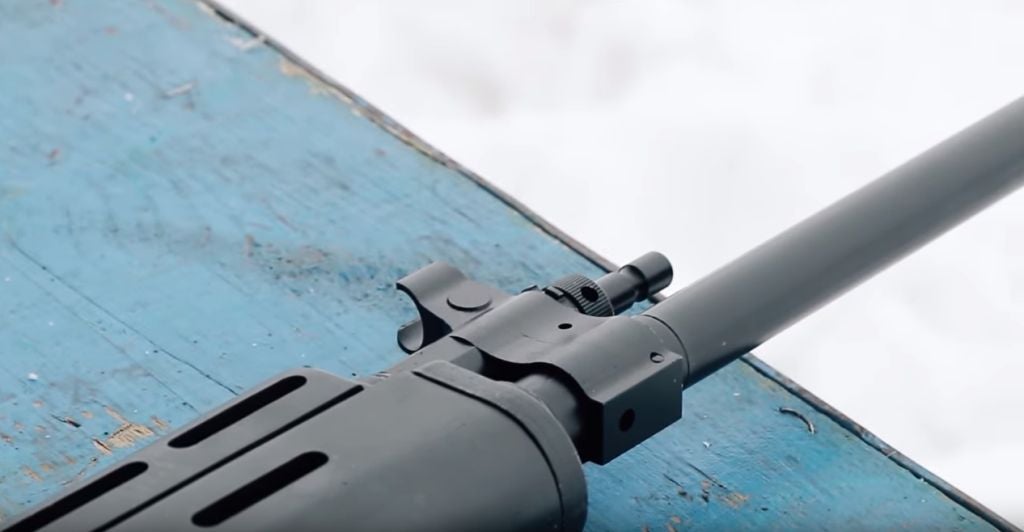
Each of the barrels has its own gas block/front sight block combo, rear sight block and a hinged top cover. The latter is attached to the barrel assembly to meet the Russian legislation requirements according to which the barrel with permanently attached parts cannot be shorter than 500mm. All three barrels also come with 3-chamber muzzle brakes.

The top covers are attached to the barrels to count as a part of the barrel assembly and meet the minimal barrel length requirement of the Russian law
The gas block of this rifle is possible to partially disassemble from the front of the rifle which allows cleaning the gas tube without disassembling it.
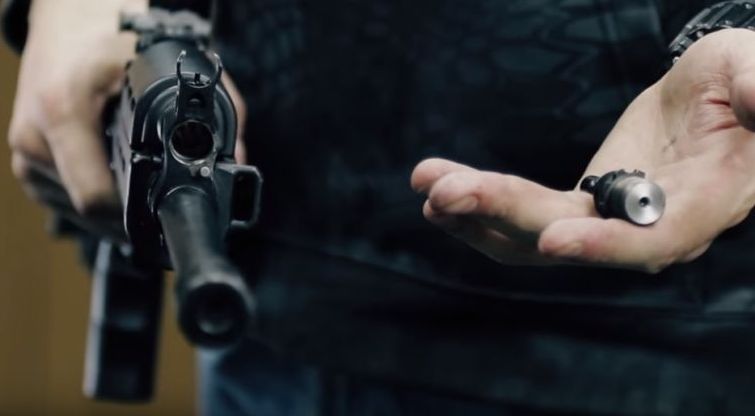
The disassembled gas block
The safety selector is ambidextrous with a thumb lever on the left side of the rifle. The magazine release has a rearward extension which allows releasing the magazine with the index finger of the primary hand.
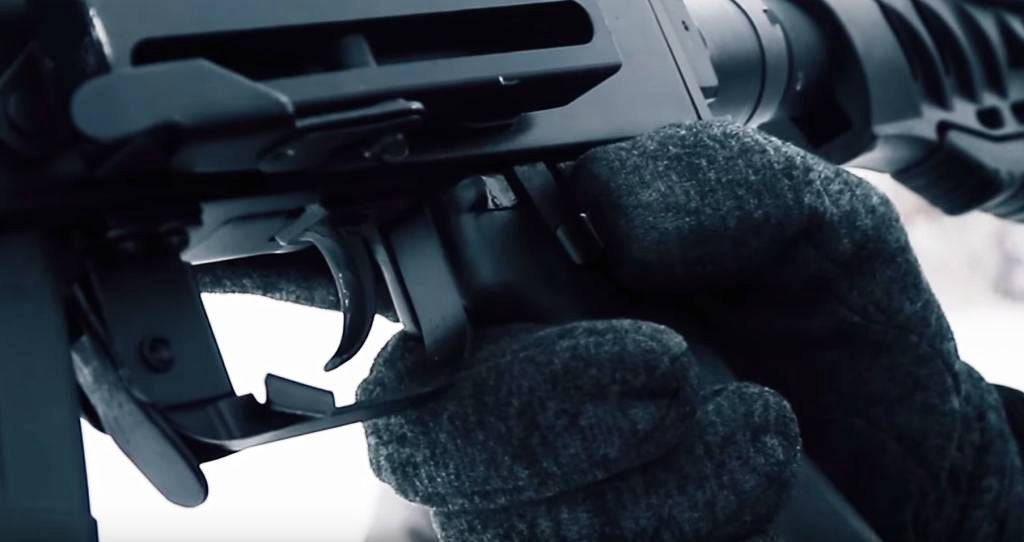
The rifle has a safety thumb lever protruding from the left side of the receiver
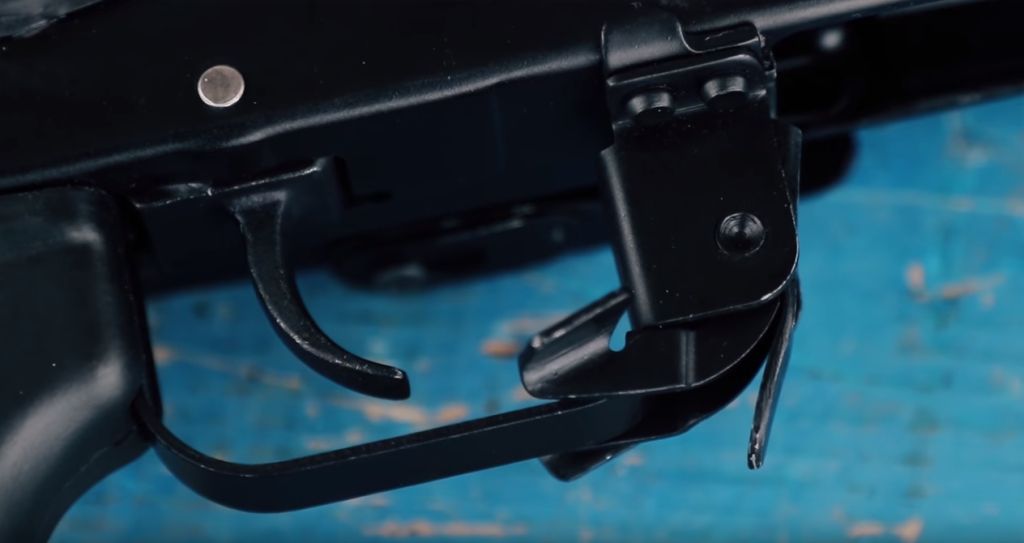
The extended magazine release lever
Other features of this rifle include the Picatinny rails on the top cover and a side rail on the receiver. The stock folds to the right side of the receiver not requiring to dismount the side rail mounted scope when folding the stock. The overall weight of the rifle is 8 lbs 9.6 oz (3.6 kg) for the short barrelled 7.62×39 configuration, 8 lbs 13 oz (4 kg) is the weight of the 6.5mm Grendel version and the long-barrelled .366 TKM version weighs 9 lbs 4 oz (4.2kg).
If you want to watch the mentioned Molot video review (in Russian) of this rifle, you can find it embedded below.
The only thing I would change in the design of this rifle is the headspace control. I would design the rifle with barrel extensions which is a proven way to ensure safe and repeatable headspace when changing the barrels. Imagine a thin-walled U-shaped front trunnion that is riveted into the receiver and accepts the barrel extension. It could still be fixed in place via a barrel nut or other retention mechanisms. When assembled it would look like a normal AK front trunnion allowing to work with standard AK parts. On the other hand, Molot engineers have probably thought about it and there should be a reason they opted for the lockup in front trunnion. Maybe there is no room for a separate barrel extension or maybe it would make the gun too expensive for their target market.
Sources:
Molot Oruzhie. (2018, March 2). “Обзор ВПО-302. Мультикалиберный карабин со сменными стволами” [Video File]. Retrieved from: https://www.youtube.com/watch?v=8OYybXdZ3_w
 Your Privacy Choices
Your Privacy Choices
